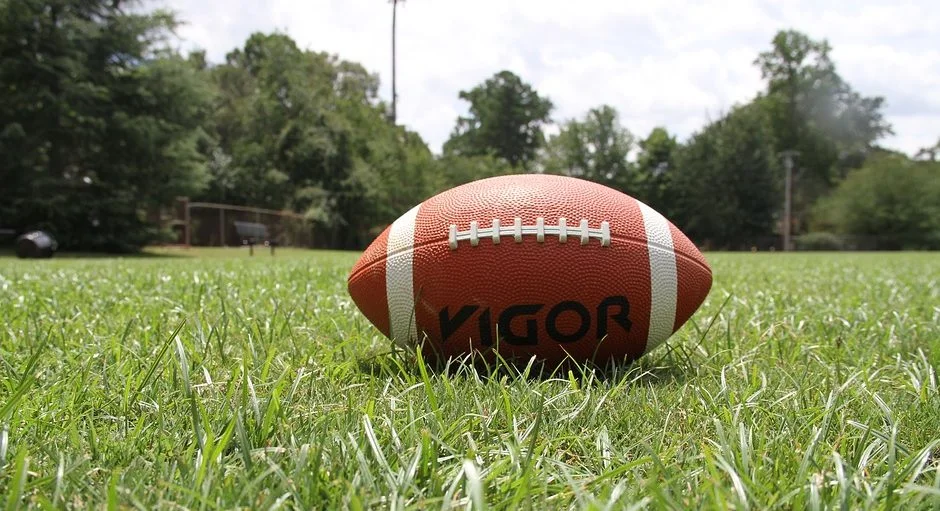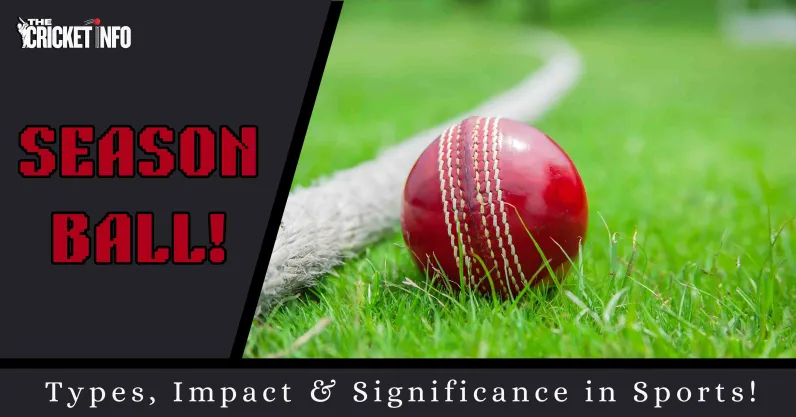A season ball ensures standardized performance, durability, and consistency in professional sports. Designed for competitive matches, a season ball meets strict regulations for weight, size, and material composition, enhancing gameplay in cricket, baseball, football, and soccer.

Unlike practice balls, a season ball prioritizes precision and performance, closely matching professional match conditions. Its high-quality construction influences speed, bounce, and control, making the season ball essential for fair play and top-level competition.
What is a Season Ball?
A season ball refers to an official match ball used in professional and amateur sports leagues. These balls are manufactured to meet stringent industry standards for weight, size, and material composition, ensuring fair play and consistent performance across games.

How is a Season Ball Different from a Practice Ball?
| Feature | Season Ball | Practice Ball |
| Material | High-quality leather, composite materials | Synthetic leather, rubber |
| Durability | Designed for professional matches | Built for training and durability |
| Performance | Optimized for precision, speed, and control | Focused on endurance and cost-effectiveness |
| Usage | Official leagues, tournaments | Training sessions, casual play |
Types of Season Balls in Different Sports
1.Cricket Season Ball
A cricket season ball is made from high-quality leather with a cork and twine core, ensuring durability and consistent performance. These balls are used in Test matches, One-Day Internationals (ODIs), and T20 matches, meeting strict regulations for weight, seam, and bounce.

Top brands like Dukes, Kookaburra, and SG manufacture premium cricket balls, each offering unique characteristics suited to different playing conditions. Dukes balls are preferred in England for their pronounced seam, Kookaburra balls dominate Australian and international cricket, while SG balls are widely used in India for their durability on subcontinental pitches.
2.Baseball Season Ball
A baseball season ball is composed of wool yarn windings, a rubber core, and a leather exterior, ensuring durability and optimal performance. It is designed to meet strict weight and size regulations, providing consistency in professional gameplay.

These balls are officially used in Major League Baseball (MLB) and other leagues worldwide. Leading manufacturers like Rawlings and Wilson produce high-quality baseballs, with Rawlings being the exclusive supplier for MLB, known for its precise stitching and premium leather construction.
3.Football (Soccer) Season Ball
A football (soccer) season ball is made from polyurethane or synthetic leather with an internal bladder for optimal air retention and bounce. These balls are engineered for precision, control, and durability in professional matches.

FIFA-approved season balls adhere to strict weight and circumference regulations, ensuring consistency across leagues and tournaments. Notable examples include the Adidas Al Rihla, the official ball of the FIFA World Cup, and the Nike Flight, used in the English Premier League, both designed for superior aerodynamics and performance.
4.American Football Season Ball
An American football season ball is constructed with pebble-grain leather and polyester stitching, providing superior grip and durability for high-impact gameplay. The design ensures optimal aerodynamics and handling for passing and kicking in professional matches.

These balls are officially used in leagues like the NFL and NCAA, where strict specifications for size, weight, and texture are followed. Leading manufacturers such as Wilson and Nike produce top-quality footballs, with Wilson being the exclusive supplier for the NFL, known for its handcrafted leather construction.
Manufacturing Process and Material Composition

Core and Inner Layers
The core and inner layers of a season ball play a crucial role in its durability, performance, and aerodynamics, varying by sport:
- Cricket balls have a cork core wrapped in twine, providing durability and maintaining shape over extended gameplay.
- Baseballs feature a rubber or cork core with wool windings, ensuring resilience and controlled flight.
- Football (soccer) balls contain an air bladder, enhancing bounce and aerodynamics for optimal on-field performance.
Outer Covering
The outer covering of a season ball is designed to enhance grip, durability, and performance across different sports:
- Cricket and baseballs are made of genuine leather, providing excellent grip, seam integrity, and longevity.
- Soccer balls use synthetic materials like polyurethane, ensuring durability, water resistance, and consistent performance in various weather conditions.
Stitching and Assembly
The stitching and assembly of a season ball significantly impact its durability, performance, and overall quality:
- Cricket balls are hand-stitched, ensuring better seam integrity and long-lasting performance.
- Baseballs feature double stitching, enhancing durability and maintaining shape during high-impact play.
- Soccer balls may be thermally bonded, reducing water absorption and maintaining a perfectly round shape for consistent flight and control.
Impact of Season Ball on Gameplay
The season ball plays a crucial role in determining the quality and fairness of professional matches. Key factors influencing gameplay include:
- Consistency & Fair Play: Standardized specifications ensure uniformity across leagues, promoting fair competition.
- Ball Behavior: The material and structure affect speed, swing, and aerodynamics, influencing player strategies.
- Player Preference: Professionals select balls based on grip, bounce, and surface interaction to suit their playing style.
- Weather Adaptability: High-quality materials allow season balls to withstand different climatic conditions, ensuring consistent performance in various environments.
FAQs
- Why is a season ball different from a training ball?
A season ball meets professional standards for weight, size, and material, while a training ball is built for durability and cost-effectiveness.
- Which season ball is best for cricket?
Dukes (England), Kookaburra (Australia), and SG (India) are the top choices, each offering different seam and swing characteristics.
- How often are season balls replaced in professional sports?
- Cricket: After 80 overs in Test matches.
- Baseball: Multiple times per game due to wear.
- Soccer: As needed, based on match conditions.
- Can I use a season ball for practice?
While possible, it’s not recommended due to the higher cost and faster wear compared to training balls.
- What materials are used in season balls?
- Cricket & Baseball: Genuine leather covers with cork or rubber cores.
- Soccer & American Football: Synthetic leather or polyurethane for weather resistance.
- Why do professional leagues use specific brands?
Each league selects brands based on performance, consistency, and durability, ensuring fair play. For example, Rawlings for MLB, Adidas for FIFA, and Wilson for the NFL.
- Does weather affect season ball performance?
Yes, humidity and temperature impact grip, bounce, and swing. High-quality materials help maintain performance in different climates.
- How do I maintain a season ball?
Store in a cool, dry place, clean regularly, and avoid excessive moisture to preserve shape and durability.
Conclusion
Season balls are essential in professional sports, directly impacting game quality, player performance, and overall experience. Their composition, durability, and adherence to regulations set them apart from practice balls, ensuring consistency in competitive matches.
Understanding the differences between season and practice balls helps players and enthusiasts make informed choices. Whether in cricket, baseball, soccer, or American football, selecting the right season ball enhances gameplay, precision, and fairness on the field.
Read more: 6 Balls 6 Sixes Record List in Cricket
Want more cricket updates Stay tuned



